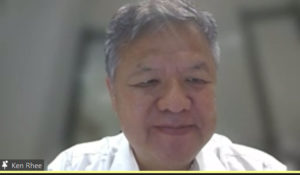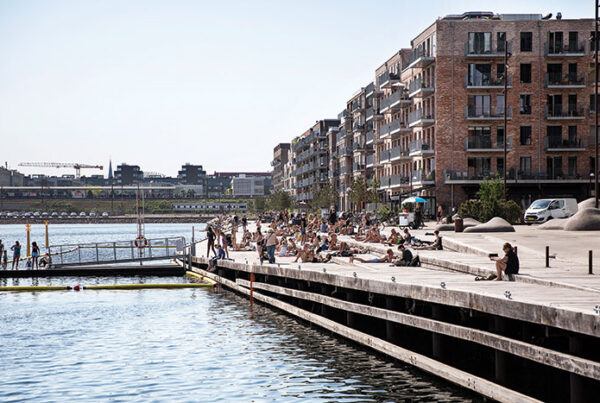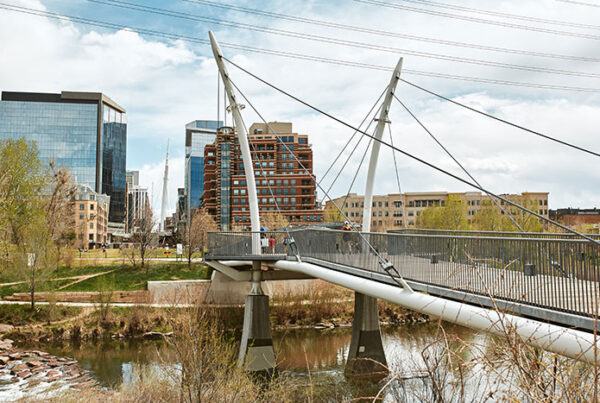Cities in southern and eastern Asia will likely bear the brunt of climate change, said Edward Mazria, founder and CEO of Architecture 2030, during a ULI Asia Pacific forum on environmental, social, and governance (ESG) in May. Mazria has been a leading advocate for the built environment to reduce its carbon emissions in combating global warming. He said the increase of the world’s temperature by 2 degrees Celsius (3.6 degrees Fahrenheit) would mean significant harm to humanity, including 1.7 billion more people exposed to severe heat waves every five years and another billion being forced to migrate.
Citing scientific data, Mazria highlighted that the world would need to keep carbon emissions under 340 gigatons of carbon dioxide to have a 67 percent probability of keeping the temperature increase below 1.5 degrees Celsius (2.7 degrees Fahrenheit). This means reducing carbon emissions by 65 percent by 2030 and achieving zero carbon by 2040. The building sector has an important role as it is essentially responsible for about half of the global carbon dioxide emissions. Mazria said that emissions come primarily from building operations (28 percent), industry (construction, equipment manufacturing) (43 percent); and transportation (23 percent). Furthermore, concrete and steel, mostly used in construction, represent around half of the industry category’s emissions.

Above and below: Ken Rhee, executive director for ULI China Mainland, is joined by Ed Mazria, founder of Arcitecture 2030, during the 2021 ULI Asia Pacific ESG Forum.

According to Mazria, efforts are being directed to reduce carbon emissions from cement and steel. Some manufacturers such as Cemex and U.S. Steel have committed to the zero-carbon emission goal. Moreover, mass timber from sustainably managed forests is increasingly being used as a substitute for steel and cement in the structure of midsized buildings.
Carbon emissions from the built environment can be divided into three sources: 1) new buildings, 2) existing buildings, and 3) buildings and infrastructure construction materials. For new buildings, Mazria said that in developed countries including China, many already have developed zero-carbon or nearly zero-carbon building codes. The key now is to upgrade their existing building code standards to zero carbon.
For existing buildings, Mazria explained the concept of “reuse, reduce, and sequester” for reducing carbon emissions from existing buildings. “Reuse” means repurposing existing buildings and developments, and reusing existing or recycled materials, rather than demolishing existing buildings. “Reduce” means reducing requirements of new buildings and developments and subsequently the embodied energy and carbon. As such, suburban expansion should be discouraged, and cities should be further densified by developing infill sites and other means. “Sequester” means the use of zero-carbon and carbon-sequestering materials such as wood and bamboo and carbon-positive concrete aggregates.
Mazria stressed the importance of buildings to become completely electrified, meaning no use of on-site fossil fuels including natural gas, and have renewable energy production on site and/or offsite, especially solar energy. He added that solar energy has become the least expensive energy source worldwide.
Mazria said that since 2005, the U.S. building sector reduced annual carbon emissions by about 30 percent while adding over 50 billion square feet (4.6 billion sq m) to its building stock. Another reason for his optimism is that the majority of carbon emissions from buildings come from a small portion of the buildings. In the case of New York City, there are roughly 27,000 buildings with more than 50,000 square feet of gross floor area, out of the total building stock of around 1 million buildings. While the larger buildings represent only 2.6 percent of all buildings, they represent around 48 percent of total carbon emissions from buildings in the city.
The situation is similar in other cities globally. As such, as a substantial portion of the large building owners buy into the need to achieve zero carbon emissions, significant improvements will be made. Mazria noted that building owners should take economic advantage of building capital improvement cycles and turn their buildings to zero carbon when they are renovating or remodeling.
Mazria concluded by stating that there is a real opportunity to meet the targets set out in the Paris Agreement, but to realize that goal, the built environment must play a major role.
KEN RHEE is executive director, ULI China Mainland.



